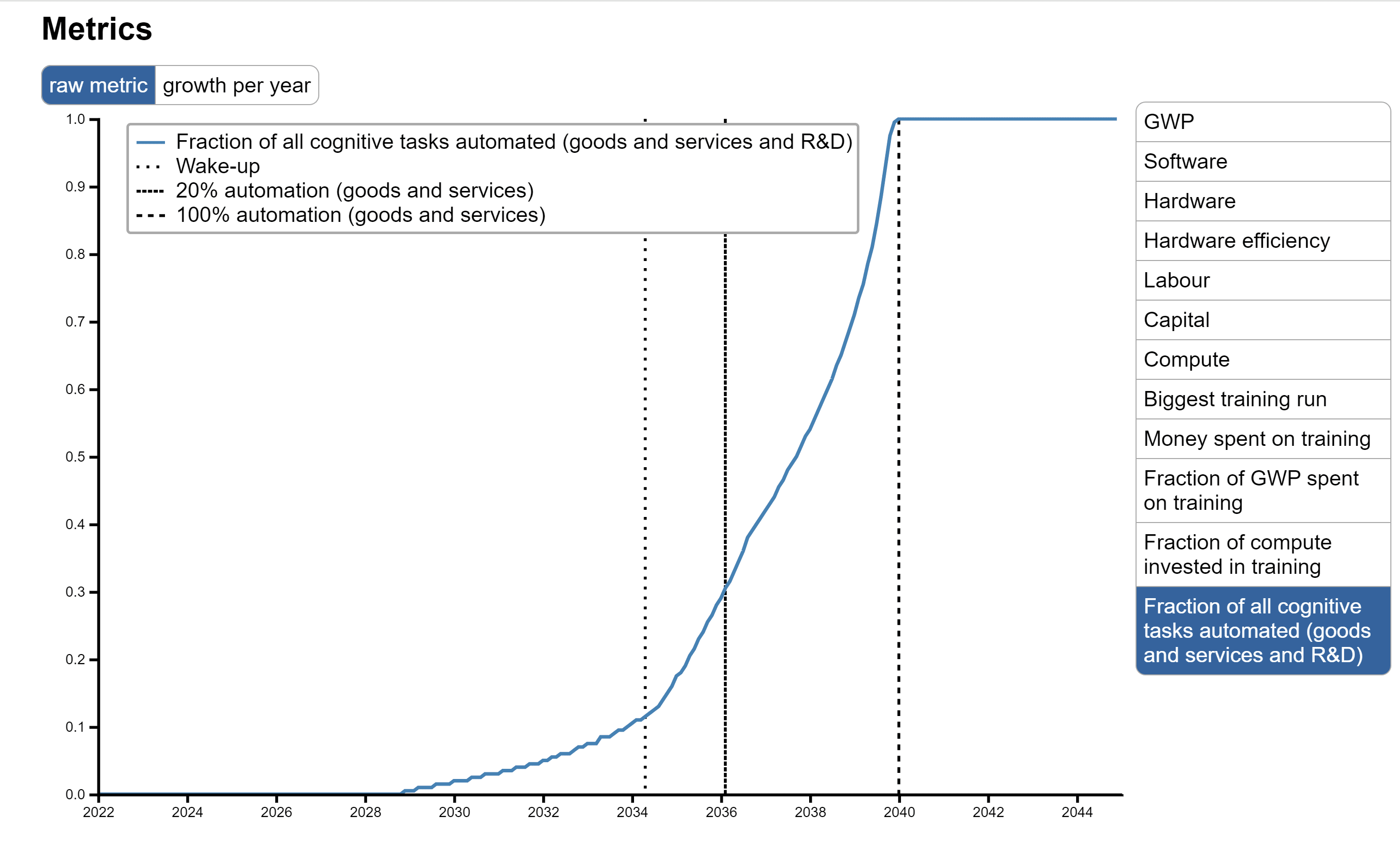In the next few decades we may develop AI that can automate ~all cognitive tasks and dramatically transform the world. By contrast, today the capabilities and impact of AI are much more limited. Once we have AI that could readily automate 20% of cognitive tasks (weighted by 2020 economic value), how much longer until it can automate 100%? This is what I refer to as the question of AI takeoff speeds; this report develops a compute-centric framework for answering it. - What a Compute-Centric Framework Says About Takeoff Speeds, Tom Davidson of Open Philanthropy, June 27, 2023.
I recently listened to Tom Davidson's 80,000 Hours episode on AI takeoff and was interested to know if anyone had any estimates of where we currently were (by his measure of per cent of cognitive tasks by 2020 economic value), where we've previously been at certain dates, and potentially where people thought we would be going forward.
There's a good chance that this was in the report (that I haven't properly read), so if it is feel free to point that out!
Thanks a bunch all


This was helpful, thanks Vasco.